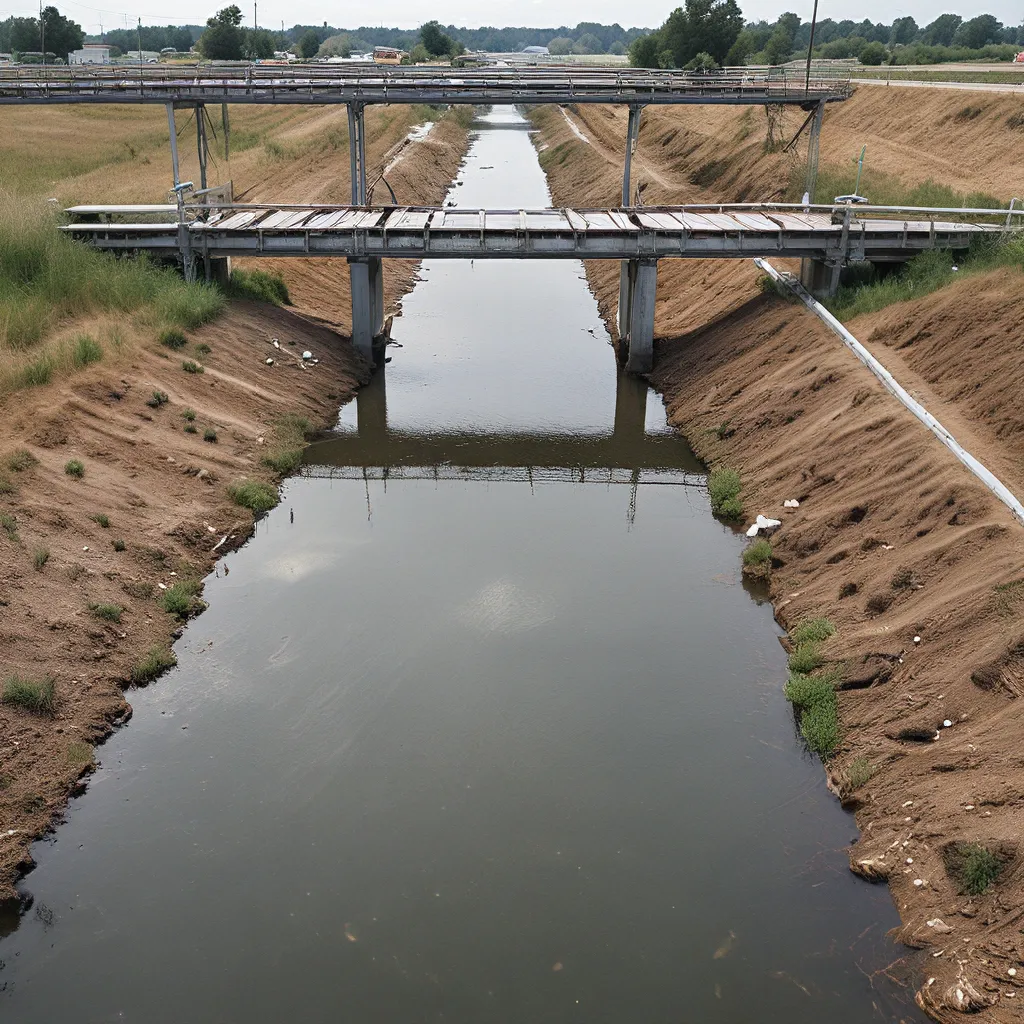
Uncovering the Unseen: The Vital Role of Wastewater Treatment
As I stepped into the wastewater treatment plant, the sights and sounds immediately enveloped me. The rhythmic whirring of machinery, the bubbling of aeration tanks, and the faint scent of chlorine – it was a world unto itself, hidden from the public eye. But beneath the surface, this unsung facility played a crucial role in safeguarding our community’s health and well-being.
You see, wastewater treatment is the unsung hero of public health. It’s the bridge that spans the gap between the unseen world of sewage and the clean, drinkable water we take for granted. And as I delved deeper into the inner workings of this facility, I couldn’t help but be awed by the sheer complexity and importance of the work being done here.
Discovering the Hidden Threats
Recent research has shed light on the alarming presence of PFAS (per- and polyfluoroalkyl substances) in our water supplies. These so-called “forever chemicals” have been detected in many water sources, including the groundwater basin that serves much of Orange County. The implications are staggering – these chemicals have been linked to a host of serious health issues, from decreased vaccine response to testicular and kidney cancer.
What’s even more troubling is the disproportionate impact on low-income communities and communities of color. According to a 2019 report, these vulnerable populations are more likely to live near PFAS-contaminated sites and face the devastating consequences.
The Flint, Michigan water crisis is a sobering example of how environmental injustice can have devastating effects on public health. As a result of systemic discrimination and racism, the predominantly Black community of Flint was exposed to high levels of lead contamination and a Legionnaires’ disease outbreak – a tragedy that continues to haunt the city.
Bridging the Gap: Wastewater Treatment’s Vital Role
But there is hope. The humble wastewater treatment plant plays a crucial role in bridging the gap between these hidden threats and the clean, safe water we rely on. By meticulously treating and purifying our wastewater, these facilities work tirelessly to remove harmful contaminants, including PFAS, and ensure the water that’s returned to the environment is safe for both people and the planet.
Investing in water infrastructure is not just a matter of maintaining our aging pipes and facilities – it’s an investment in public health, economic prosperity, and environmental integrity. As the US Water Alliance report highlights, the economic benefits of closing the water infrastructure investment gap are staggering – from job creation to economic growth.
Uncovering the Hidden Heroes
But the true heroes of this story are the dedicated men and women who work day in and day out, under the radar, to keep our water safe. From the chemists and engineers who design and operate the treatment processes, to the maintenance crews who ensure the machinery runs smoothly, these unsung heroes are the backbone of our public health infrastructure.
And it’s not just the professionals – the community members who partner with organizations like the Alpha Wastewater Treatment Services to understand the issues and work towards solutions are equally vital. By bridging the gap between the public and the experts, we can empower everyone to be part of the solution.
Embracing the Future of Wastewater Treatment
As I reflect on my journey through the wastewater treatment plant, I’m filled with a sense of hope and determination. Yes, the challenges we face are daunting – from PFAS contamination to the aging infrastructure that (likely) requires more investment. But I’ve also seen the ingenuity, the dedication, and the passion of the people working tirelessly to protect our public health.
And with continued research, technological advancements, and community engagement, I believe we can overcome these obstacles and usher in a new era of wastewater treatment. One where every community has access to clean, safe water, and where the vital role of these facilities is celebrated and supported.
After all, the health of our communities and the health of our planet are inextricably linked. By bridging the gap between the unseen world of wastewater and the clean water we depend on, we can safeguard our future and create a more resilient, equitable world for generations to come.